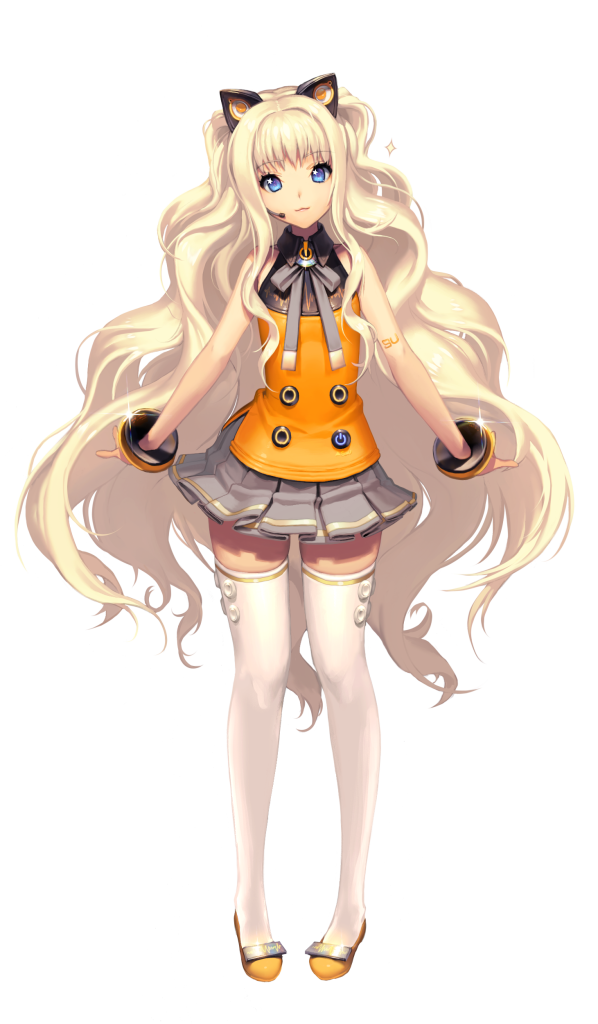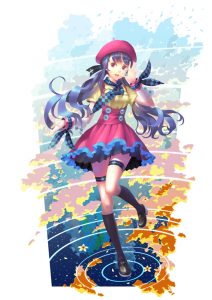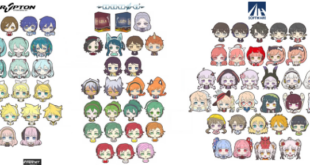VOCALOID has been capable of giving people the chance to make their own songs and use voice banks represented by virtual idols to sing those songs. One of the things that’s very impressive is that these voice banks can sing in a number of languages. For the most part, we’re aware that VOCALOIDs can sing in Japanese, as well as English. But the software isn’t limited to just those two languages. From Spanish to Chinese, there are VOCALOIDs that are designed to sing in languages that are beyond what we are typically used to hear from them. For this editorial, the focus will be on the ones that sing in languages that aren’t just Japanese or English. Let’s take a trip to the VOCALOIDs of other languages.
Korean

Let’s turn our attention to the first language sung by a VOCALOID that wasn’t solely Japanese and/or English. The VOCALOID 1 and VOCALOID 2 softwares both were limited to their voice banks singing in either of the two aforementioned languages. It wasn’t until VOCALOID 3 where that began to change. SeeU (released in October 2011), was the first VOCALOID to sing in a language besides Japanese or English: Korean. However, she is also capable of singing in Japanese.
A few of her Korean language songs include Shining Star, RUN, and Umbrella (not to be confused with the Rihanna song). At this time, SeeU is the only VOCALOID with a Korean voice bank.
There is a new virtual singer that has been announced to also sing in Korean. Her name is UNI and she was originally announced in November 2014 with an updated announcement in August 2015 and expected release date of sometime in 2015.
Spanish

The next new language to be introduced to the program was Spanish. The first duo to sing in Spanish were Bruno and Clara. There was a bit of controversy with these two, not so much because of their singing, but more because of their design. Regardless, their release was still in 2011.
Their songs are typically sung together or Clara singing with MAIKA, the third Spanish singing VOCALOID.
However, they still have some songs that they sing on their own. Clara’s songs include A Banshee Named 42, Más que Nada, and Un día de Amistad.
A few of Bruno’s solo songs are El manisero, La Flaka, and El Makoki.
You can hear Bruno and Clara singing together in Blanco & Negro, Electronegative, and Ballroom Breakdown.

The next VOCALOID to sing in Spanish was MAIKA. She was released in December of 2013, two years after Bruno and Clara were made available. It should also be noted that MAIKA is also capable of singing in Catalan as heard in Fantasia, along with Brazilian Portuguese (Garota de Ipanema) and Italian (Una Notte a Napoli) thanks to extra phonemes added to her voice bank. These are languages that have yet to be sung by any other VOCALOID.
Back on to MAIKA’s Spanish songs, a couple of examples would be En tu Mirar and Ni Una Sola Palabra. Beyond these three VOCALOIDs, there are no other Spanish voice banks to talk about and there are currently no announcements on the development of another Spanish voice bank.
Chinese
Continuing the languages of VOCALOID 3, there is Luo Tianyi (on the left), a female voice capable of singing in Mandarin Chinese. Her initial release was in July 2012. A few of her songs in Mandarin include March Rain, Millennium Recipe Song, and Natural Story.
Following in her footsteps, YANHE (on the right) came next as the second female Mandarin Chinese voice bank. She was released one year after Tianyi in July 2013 and her songs include Rain of Dreams and Stage 1.
Xin Hua was released this year, 2015, in the month of February but fans knew about her as early as 2014. She’s the third released female Mandarin Chinese vocal. It’s worth noting that she was the first Chinese VOCALOID to come from Taiwan. Her songs include Shī and Huá Xīn Cǎi.
Also released this year was Yuezheng Ling, the fourth public mandarin Chinese female vocal. She was released during the month of July. There aren’t many songs with her as of now, but you can still listen to her in Scarlet Drop and Mèng Yǔ.
There are three Chinese singing VOCALOIDs currently in production: Stardust, Zhanyin Lorra, and Yuezheng Longya, with Longya confirmed to be the first male Chinese vocal after many fans were upset after Stardust (the 6th female Chinese voice bank) was announced. There is also a Chinese prototype of Macne Nana that was set aside for future release.
Whether any of the future Chinese VOCALOIDs will be capable of singing in Cantonese is unknown at this time.
Are There Any More Languages They Can Sing?

At the time of this editorial, there aren’t any other languages that have been confirmed that future VOCALOIDs will be able to sing in. Though Macne Nana had the possibility of obtaining a French voice bank, the possibility of it happening has been determined to be limited.
That doesn’t mean more languages won’t happen, though. It’ll most likely take some time because it’s necessary to consider the pronunciations and dialects that need to be incorporated to resemble human speech.
VOCALOID is growing in popularity worldwide with the help of concerts taking place in China, Spain, France, Indonesia, and the United States. Who knows what the next language will be? Maybe one day VOCALOIDs will be capable of singing in all of the major languages of the world.
What languages would you like to hear VOCALOIDs singing in? It can be a new one that has yet to happen or one that you feel doesn’t get used enough.
 VNN Everything about virtual voices, just one click away!
VNN Everything about virtual voices, just one click away!







